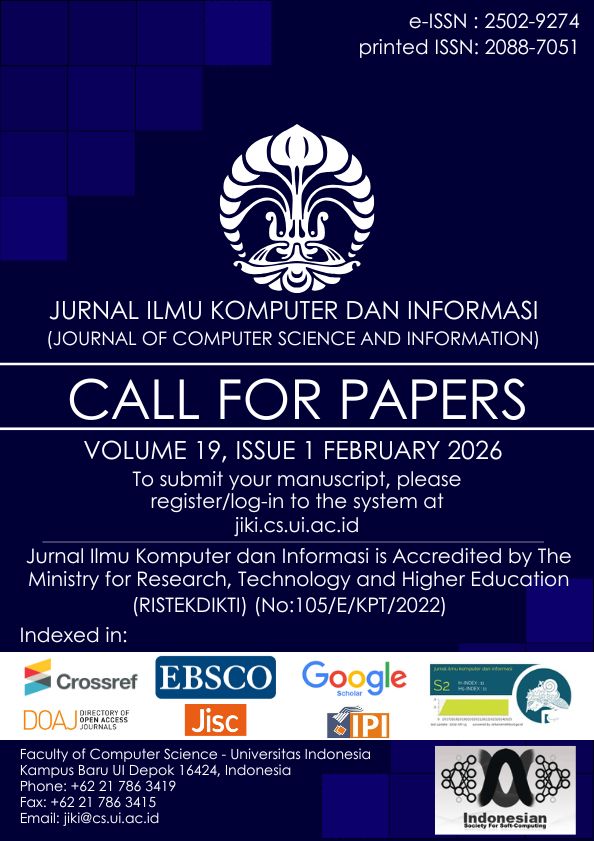Application of Q-learning Method for Disaster Evacuation Route Design Case Study: Digital Center Building UNNES
DOI:
https://doi.org/10.21609/jiki.v17i2.1236Abstract
The Digital Center (DC) building at UNNES is a new building on the campus that currently lacks evacuation routes. Therefore, it is necessary to create an evacuation route plan in accordance with the Minister of Health Regulation Number 48 of 2016. Creating a manual evacuation route plan can be inefficient and prone to errors, especially for large buildings with complex interiors. To address this issue, learning techniques such as reinforcement learning (RL) are being used. In this study, Q-learning will be utilized to find the shortest path to the exit doors from 11 rooms on the first floor of the DC building. The study makes use of the floor plan data of the DC building, information about the location of the exit doors, and the distance required to reach them. The results of the study demonstrate that Qlearning successfully identifies the shortest evacuation routes for the first-floor DC building. The routes generated by Q-learning are identical to the manually created shortest paths. Even when additional obstacles are introduced into the environment, Q-learning is still able to find the shortest routes. On average, the number of episodes required for convergence in both environments is less than 1000 episodes, and the average computation time needed for both environments is 0.54 seconds and 0.76 seconds, respectively.
Downloads
Published
How to Cite
Issue
Section
License
Authors who publish with this journal agree to the following terms:
- Authors retain copyright and grant the journal right of first publication with the work simultaneously licensed under a Creative Commons Attribution License that allows others to share the work with an acknowledgement of the work's authorship and initial publication in this journal.
- Authors are able to enter into separate, additional contractual arrangements for the non-exclusive distribution of the journal's published version of the work (e.g., post it to an institutional repository or publish it in a book), with an acknowledgement of its initial publication in this journal.
- Authors are permitted and encouraged to post their work online (e.g., in institutional repositories or on their website) prior to and during the submission process, as it can lead to productive exchanges, as well as earlier and greater citation of published work (See The Effect of Open Access).










